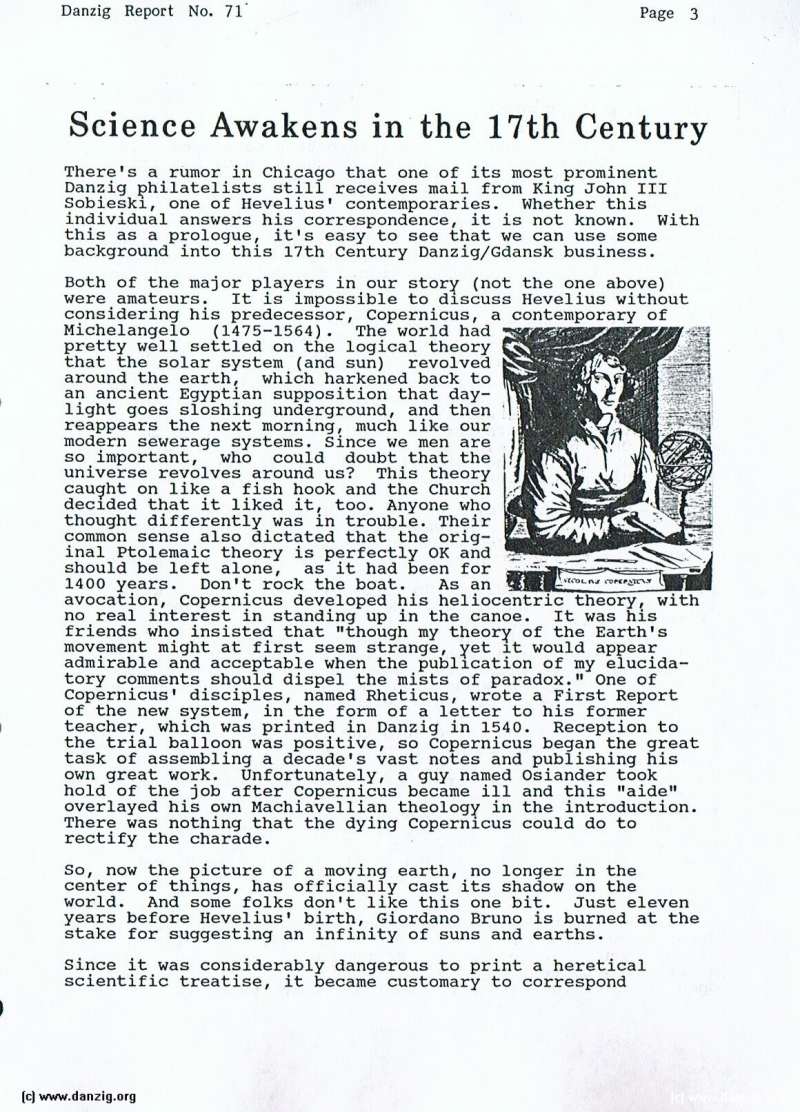
Science Awakens in the 17th Century
There’s a rumor in Chicago that one of its most prominent Danzig hilatelists still receives mail from King John III Sobieski, one of Hevelius’ contemporaries. Whether this individual answers his correspondence, it is not known. With this as a prologue, it’s easy to see that we can use some background into this 17th Century Danzig/Gdansk business.
Both of the major players in our story (not the one above) were amateurs. It is impossible to discuss Hevelius without considering his predecessor, Copernicus, a contemporary of Michelangelo (1475—1564). The world had pretty well settled on the logical theory that the solar system (and sun) revolved around the earth, which harkened back to an ancient Egyptian supposition that daylight goes sloshing underground, and then reappears the next morning, much like our modern sewerage systems. Since we men are so important, who could doubt that the universe revolves around us? This theory cau9ht on like a fish hook and the Church decided that it liked it, too. Anyone who thought differently was in trouble. Their common sense also dictated that the original Ptolemaic theory is perfectly OK and —: should be left alone, as it had been for 1400 years. Don’t rock the boat. As an avocation, Copernicus developed his heliocentric theory, with no real interest in standing up in the canoe. It was his friends who insisted that “though my theory of the Earth’s movement might at first seem strange, yet it would appear admirable and acceptable when the publication of my elucidatory comments should dispel the mists of paradox.” One of Copernicus’ disciples, named Rheticus, wrote a First Report of the new system, in the form of a letter to his former teacher, which was printed in Danzig in 1540. Reception to the trial balloon was positive, so Copernicus began the great task of assembling a decade’s vast notes and publishing his own great work. Unfortunately, a guy named Osiander took hold of the job after Copernicus became ill and this “aide” overlayed his own Machiavellian theology in the introduction. There was nothing that the dying Copernicus could do to rectify the charade.
So, now the picture of a moving earth, no longer in the center of things, has officially cast its shadow on the world. And some folks don’t like this one bit. Just eleven years before Hevelius’ birth, Giordano Bruno is burned at the stake for suggesting an infinity of suns and earths.
Since it was considerably dangerous to print a heretical scientific treatise, it became customary to correspond
Danzig Report Vol. 1 - Nr. 71 - April - May - June - 1991, Page 3.
Hits: 3577
Added: 30/06/2015
Copyright: 2025 Danzig.org

